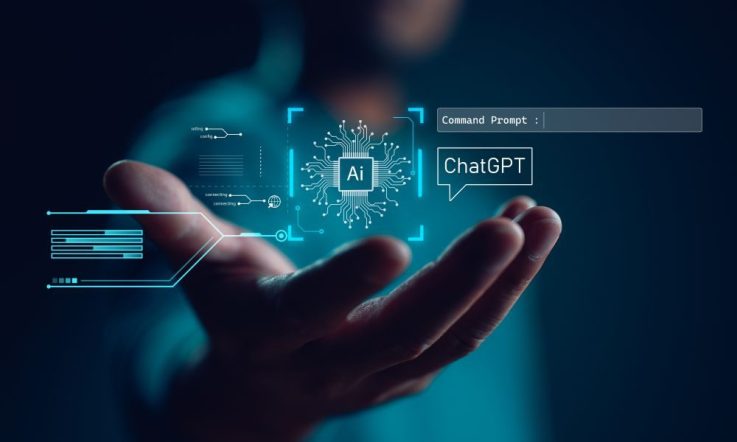Generative artificial intelligence (generative AI) refers to technology that employs machine learning techniques to create new content, such as text, images, audio, and video. Generative AI tools like ChatGPT, DALL-E 2, and Midjourney have gained popularity worldwide, including among teachers, due to their potential to save time and generate new ideas and resources.
Given the novelty of this technology, relatively little is known about the role of generative AI in teaching and learning. This gap is important to address to help guide policy and practice as education departments integrate generative AI into teaching and learning at schools (Commonwealth of Australia, 2023).
Because teachers will be in the front line of these practices and policies, it is vital to understand how they perceive generative AI and the ways in which they are using it in their work. In a recent study (Collie & Martin, 2024), we examined how much teachers value the usefulness of generative AI, how they were integrating generative AI in their work, and the role of school leadership practices and teachers’ own occupational experiences in supporting or thwarting these experiences.
By looking at these factors together, this research offers multipronged insights into how generative AI may be integrated into classroom and school life.
What did our research involve?
We collected data from a sample of 339 Australian school teachers in June and July 2023, approximately 6 months after the release of the first generative AI chatbot, ChatGPT. Many additional generative AI tools had been released by that point too (including, GPT 4, Grammarly AI, Midjourney, Bing Chat AI, and Dall-E 2).
As indicated, we looked at teachers’ valuing of generative AI and their integration of this technology in teaching and learning.
- Generative AI valuing captures teachers’ perceptions that generative AI will play a useful and beneficial role in their work.
- Generative AI integration reflects teachers’ use of this technology for assisting with their own work tasks (such as planning, teaching, and assessing) and in student learning activities (such as by asking students to generate ideas, check work, and develop outlines).
The factors we examined as predictors of the generative AI variables included teacher reports on their perceptions of 2 school leadership practices and 2 occupational experiences:
- Autonomy-supportive leadership practices denote efforts by school leaders to foster teachers’ self-initiative by, for example, acknowledging their viewpoints, seeking their input, and understanding their individual needs.
- Autonomy-thwarting leadership practices denote approaches by school leaders that require compliance in how teachers undertake their work tasks, or prompt feelings of guilt or shame among teachers if they conduct their work in ways that are different from the leaders.
- Professional growth striving denotes teachers’ deliberate efforts to plan for their ongoing professional learning and development.
- Change-related stress denotes teachers’ stress from recent changes in their work and workplace.
What did our study find?
Our findings showed that higher levels of autonomy-supportive leadership and professional growth striving were linked with greater valuing of generative AI. This means that teachers who felt their school leaders supported their self-initiative and those who were invested in their own professional development tended to value generative AI more. This makes sense and aligns with prior research showing supportive leadership and growth-oriented teachers are more likely to report greater valuing and motivation at work (Collie, 2023a).
Unexpectedly, we found that change-related stress was also associated with greater valuing of generative AI. This requires further research to unpack, but we speculate it may be that stressed teachers value generative AI because it offers the opportunity to assist with their tasks and streamline their workload.
When it came to generative AI integration, our study showed that higher levels of generative AI valuing were associated with greater levels of generative AI integration. This finding is understandable. When we value something, we’re more likely to engage in actions related to that perception.
In addition, we found that higher levels of autonomy-thwarting leadership and professional growth striving were linked with greater generative AI integration. For the former finding, it may be that generative AI offers teachers a chance to take back some control over their work when they experience pressuring leadership. With regard to professional growth striving, we suggest that generative AI integration offers an opportunity to further build professional skills.
What does this mean for school leaders and teachers?
Our findings suggest that leadership practices and teachers’ occupational experiences might be important to address in relation to supporting generative AI valuing and integration.
As relevant to our study, strategies to boost autonomy-supportive leadership practices include seeking out teachers’ perspectives, providing rationales for work task assignments, and incorporating teachers’ input into decisions about how to integrate generative AI into teaching and learning (Collie, 2023b).
At the same time, it is important to reduce autonomy-thwarting leadership practices (Collie, 2023b). Leaders can do this by avoiding pressuring practices, such as demanding how things must be done, providing teachers little choice in how they integrate generative AI, or making teachers feel guilty if they do things differently.
Efforts to boost professional growth striving might include encouraging teachers to set goals for their learning with generative AI, giving them opportunities to engage in relevant and effective training to meet those goals, and building professional learning communities within the school to boost collective goals (Garet et al., 2001).
Finally, to reduce change-related stress, any efforts by schools to reduce or streamline reforms might be helpful, including around expectations for integrating generative AI (Putwain et al., 2019). Autonomy-supportive leadership practices are also helpful because these ensure that teachers’ perspectives are considered (Collie, 2021), which may help teachers feel more control over decisions that impact their work.
References
Collie, R. J. (2021). COVID-19 and teachers’ somatic burden, stress, and emotional exhaustion: Examining the role of principal leadership and workplace buoyancy. AERA Open. https://doi.org/10.1177/2332858420986187
Collie, R. J. (2023a). Teachers’ work motivation: Examining perceived leadership practices and salient outcomes. Teaching and Teacher Education, 135, 104348. https://doi.org/10.1016/j.tate.2023.104348
Collie, R. J. (2023b). Teachers’ work motivation: Examining perceived leadership practices and salient outcomes. Teaching and Teacher Education, 135, 104348. https://doi.org/10.1016/j.tate.2023.104348
Collie, R. J., & Martin, A. J. (2024). Teachers’ motivation and engagement to harness generative AI for teaching and learning: The role of contextual, occupational, and background factors. Computers and Education: Artificial Intelligence, 6,100224. https://doi.org/10.1016/j.caeai.2024.100224
Commonwealth of Australia. (2023). Australian Framework for Generative Artificial Intelligence in Schools. Department of Education. https://www.education.gov.au/schooling/resources/australian-framework-generative-artificial-intelligence-ai-schools
Garet, M. S., Porter, A. C., Desimone, L., Birman, B. F., & Yoon, K. S. (2001). What makes professional development effective? Results from a national sample of teachers. American Educational Research Journal, 38(4), 915-945. https://journals.sagepub.com/doi/10.3102/00028312038004915
Putwain, D. W., & von der Embse, N. P. (2019). Teacher self-efficacy moderates the relations between imposed pressure from imposed curriculum changes and teacher stress. Educational Psychology, 39(1), 51–64. https://doi.org/10.1080/01443410.2018.1500681
In Rebecca Collie and Andrew Martin’s study, ‘teachers who felt their school leaders supported their self-initiative and those who were invested in their professional development tended to value generative AI more’.
As a school leader, do you seek out teacher perspectives on integration of new programs or technologies? Is their input incorporated into decision-making?
When introducing new technologies, do you encourage teachers to set goals for their own learning and provide opportunities for training to meet these goals? What role do professional learning communities within the school play?



